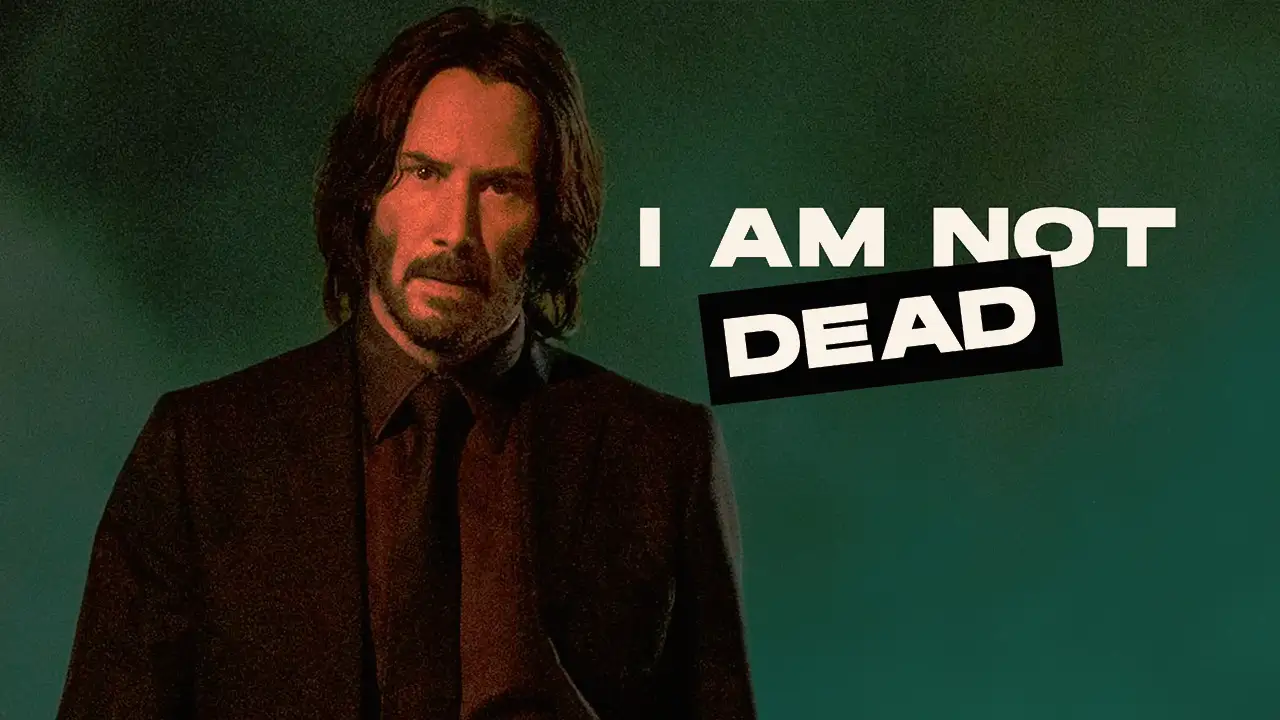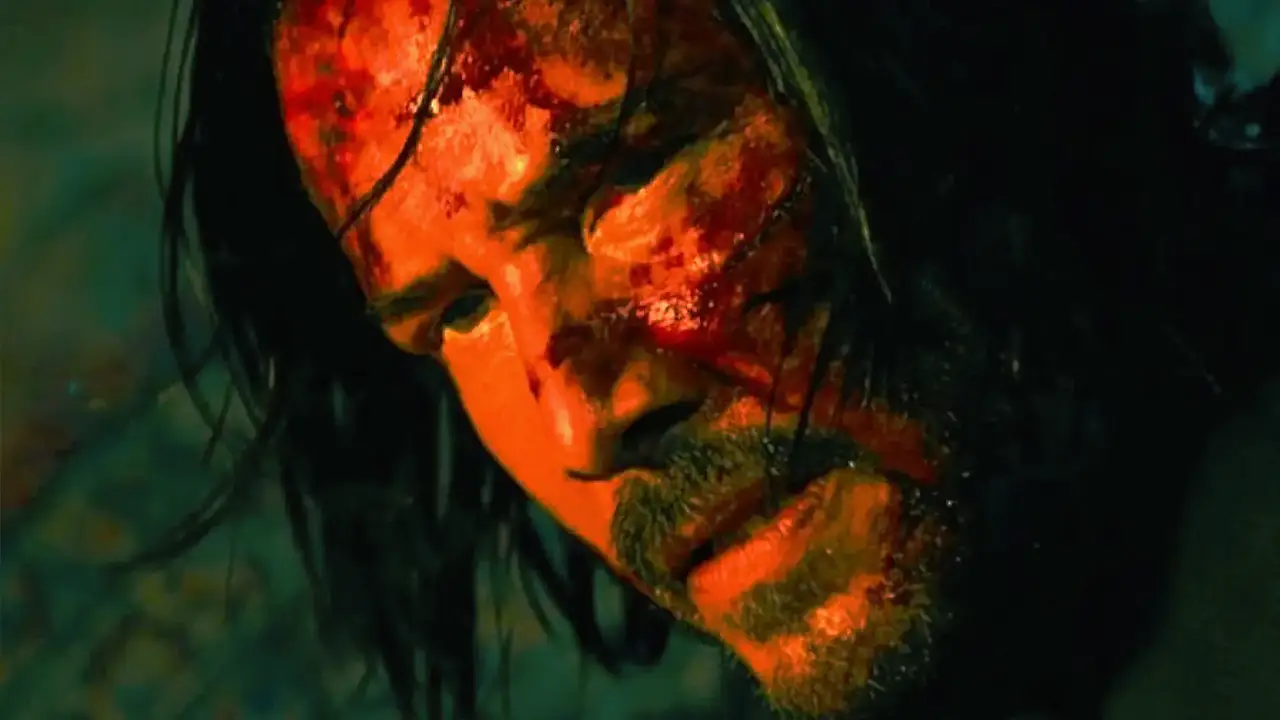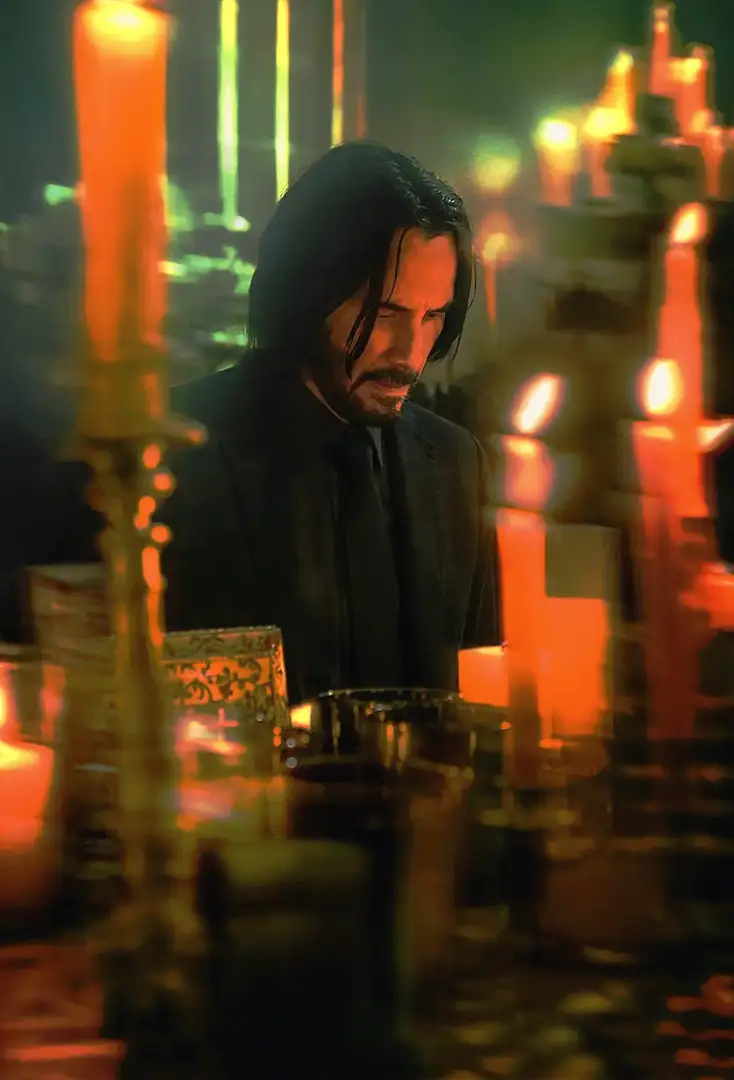John Wick is Dead?
John Wick Chapter 4 – At the end of his latest movie, we witness the demise of John Wick. But is everyone’s favorite puppy-loving assassin really dead? What say you, John? You’re dead, right? Am I? No, he’s alive, and I’m about to prove it. Long live John Wick. Hello, Internet. Welcome to Action Vista, the show that knows no business can be done on continental grounds. Loyal theorists, today we’re talking about one of my favorite franchises to pop up over the past decade, John Wick. You ready, John?
Table of Contents
ToggleThe Legendary Assassin
In case you missed this one, John Wick is about a legendary assassin seeking revenge against the entire criminal underworld, known collectively as the High Table, after they kill his dog. Later movies are less about the dog and more about just leaving the organization, but regardless, these films have a pretty simple premise. What follows then are four films of incredible action in a super stylish, neon-lit world, all directed by stunt professionals who make sure you see exactly what’s going on.
Shocking Demise in Chapter 4
And I think the results speak for themselves. John Wick is one of those rare franchises where each sequel is arguably better than the entry that came before, with box office numbers to match. Not that much of a shock when it’s clear how much love is put into these things, but you know what was a shock? John Wick’s death at the end of Chapter 4. After months of running and fighting his way through armies of faceless goons, John is forced into one final duel against his old friend Kane. In it, he’s shot three times and although he manages to survive long enough to kill the big boss and win his freedom, minutes later he takes a seat and peacefully succumbs to his wounds. To say that literally no one saw this coming is putting things mildly. As I was walking out of my showing of the movie, I heard multiple people asking each other, “He can’t be dead, right?” I mean, it takes a lot to surprise me in movies at this point, and even I have to admit, this one got me. John Wick is a huge franchise. There is a hunger from fans for more of these movies, and now, at the height of their success, they kill off the main character. No, I don’t think so. It doesn’t matter if we saw a grave because John Wick isn’t dead.
Questioning John's Demise
When you actually look at this franchise and examine the type of injuries that Wick sustains throughout his quest to escape the High Table, things do not line up here. There is no way that the wounds that he takes in this final duel kill him. In fact, not only is John Wick not dead, but after watching these movies again, I am almost 100% convinced that John Wick literally cannot die, and there’s a secret reason for it. So put on your magic bulletproof suit, loyal theorists, we’ve got a death to disprove.
Analyzing the Timeline and Injuries
To do this analysis, we’re going to be lumping the movies into two groups: John Wick chapters one through 3 and John Wick chapter 4. Why? Well, it has to do with the time frame where the movies take place. According to franchise director Chad Stahelski, the first three John Wick movies take place in like a week, week and a half. Somewhere in there. So all this fighting, all the goons he kills, all the damage that he takes across those three movies. Yep, all of that’s apparently happening in just under two weeks. Meanwhile, here I am weeping on the floor every time I step on a Lego. On the other hand, Chapter 4 apparently takes place with enough time for John to have had himself a chance to rest, heal, and refill his tank.
Major Injuries and Recovery
Additionally, we’re only going to be looking at the major injuries here. Sure, he sustains plenty of punches and falls through glass, but we’re going to be focusing on the moments that stand the best chances of killing him. And it seems to me that the best starting point is actually the end. By taking a closer look at the wounds that do “wind up” killing him. During this final shootout, Kane grazes Wick’s right arm, hits his left shoulder, and then shoots his lower abdomen. The resulting blood loss then seemingly causes Wick to die shortly thereafter. But hold on for a second there. Why does that wound pattern sound so familiar? Well, because this isn’t the first time that we’ve seen someone shot in these places in the franchise. In Chapter 3, John is forced to shoot a friendly doctor in order to save his life. It’s complicated, but trust me, it works. Anyway, he asks where the doctor would like to be shot, and the doctor points to two specific locations. “That will hurt, so it won’t be fatal here just below my floating rib. Oh wait, one may not be enough. You should aim to graze me. Good luck Mr. Wick.” The first is in his lower abdomen side, and the second is through his shoulder. The exact same parts of the body where Kane hits Wick during their shootout at the end of Chapter 4. And remember, the doctor chose those spots specifically because they wouldn’t be outright fatal.
Understanding Blood Loss and Survival Rates
That right there is highly suspicious. Not only that, but John also shot Kane in the same part of the abdomen, and we see him able to make a full recovery by Chapter 4’s post-credit scene. So already we have ourselves two solid points of evidence indicating that John shouldn’t be dead at the end of this duel. And all of that is without saying that these guys are trained professionals. They can get a headshot in their sleep. The fact that they’re only grazing each other and hitting non-essential areas is a dead giveaway that something else is afoot. But let’s just talk for a second about blood loss. According to the National Library of Medicine, healthy adults have an average of 4 1/2 to 5 1/2 liters of blood circulating through their bodies at any given time. Obviously, everyone’s going to react to trauma differently, but as a general guideline, most adults can lose up to 15% of that blood volume without any sort of physical symptom. This is known as a Class 1 hemorrhage. Anything above that, though, symptoms get progressively worse. Between 15 and 40% blood loss can result in nausea, fatigue, and hallucination. It isn’t until you get to 40% or more blood loss where things start to become seriously deadly. These are the Class 4 hemorrhages. They’re the sorts of wounds that have high risks of organ failure, coma, and death.
The Theory of John Wick's Immortality
So how much blood does John lose? Well, to calculate that, we need to know how badly he was injured. According to the Internet Movie Firearms Database, the guns used in the duel appear to be a pair of engraved Thompson Center Arms Encore pistols with nickel-plated or silver-cast .44 Magnum cartridges. How powerful is a .44 Magnum cartridge? In the words of Dirty Harry, “This is a .44 Magnum, the most powerful handgun in the world, and will blow your head clean off.” These should be doing some significant damage. Emphasis on should. But now just take a look at the wounds on John’s stomach and arms. To lose 40% of his blood,
Anyways, look, in short, over the course of two weeks, from chapters one through 3, John Wick is shot, stabbed, hit by cars, dangerously cauterizes a wound being close enough to an explosion that he’s thrown by it and fallen a distance that breaks his back. All of these wounds are far worse than what finally, quote UN quote, kills him at the end of Chapter 4. It can only lead me to conclude that John Wick just isn’t dead. At the end of the latest movie. The name is dead. The legend of John Wick is dead. But the man? No, he’s still alive and out there. But that still doesn’t answer the question of how, not how we survive chapter four. I think we’ve covered that fairly well. But how he survived chapters one through three? That is a brutal 2 weeks that should have killed him multiple times over. But you know what? I think I have an answer. Loyal theorists See, in a short that we released a few weeks ago, we proved that the blind assassin Kane has to have himself superpowers. It is the only way that he’d be able to feel what cards he’s dealt during the Chapter 4 poker game. And I don’t think that he’s the only superpowered assassin that we’re seeing in these movies. John has powers too, specifically a healing factor akin to Wolverine or Deadpool.

Now that might seem like a bit of a leap, but we see evidence of John’s healing factor in action during the films. In Chapter One, John gets this cut on his nose, and yet it’s completely gone when Chapter 2 begins. This is supposed to be happening immediately afterward, and even a superficial cut like this could take a few days to heal completely. Want a more serious wound that gets magically healed? Remember John getting shot in his abdomen twice during Chapter 2? And yet when a stab wound on his shoulders being treated in chapter three, we see that those gunshots on his abdomen have completely healed over. No scars, no wound dressing, no stitches, no nothing. Chapter 3 takes place immediately after Chapter 2, and the filmmakers cared enough about continuity that John is wearing the same shirt with the same bloodstains from those gunshot wounds, and yet no actual evidence of those wounds on his body exists. All because John Wick has a super-healing factor. That’s why he’s able to keep going and going and going throughout these films, getting up every time he’s knocked down, killing every assassin that gets sent his way. John Wick isn’t dead because he is literally immortal. Thematically, it works real well. John and Kane agree.





